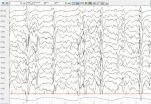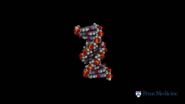(Press-News.org) CAMBRIDGE, Mass. (September 25, 2014) – To coordinate their size and growth with current environmental conditions, cells rely on the mechanistic target of rapamycin complex 1 (mTORC1) pathway, which senses cellular stresses, growth factors, and the availability of nutrients, such as amino acids and glucose.
For years, Whitehead Institute Member David Sabatini and his lab have been teasing apart the numerous proteins involved in this vital metabolic pathway, in part because mTORC1 function is known to be deregulated in a variety of diseases, including diabetes, epilepsy, and cancer.
"We want to understand how our cells sense nutrients and how they transmit that signal to mTORC1," says Lynne Chantranupong, a graduate student in Sabatini's lab. "We started at the mTORC1 kinase and are building the pathway up piece by piece to identify who is talking to whom in the pathway and to understand how each of those proteins is relaying information about the availability of nutrients in the cell."
Now Sabatini's lab is adding to our understanding of the pathway by implicating a trio of poorly understood growth regulators called the Sestrins. Chantranupong and Rachel Wolfson, who is also a graduate student in Sabatini's lab, describe their work with the Sestrins this week in an online edition of the journal Cell Reports.
Working in human cells, Chantranupong and Wolfson found that the Sestrins are major indirect negative regulators of mTORC1 signaling. Upstream of the mTORC1 complex are several protein complexes and kinases, including two related protein complexes, GATOR1 and GATOR2, and the Rag GTPases. In the absence of amino acids, the building blocks of proteins, the Sestrins work cooperatively to somehow inhibit mTORC1signalling by interacting with GATOR2.
"There's still a lot we don't know about the mTORC1 pathway," says Wolfson. "The more proteins we find, the more complicated it becomes, which makes sense for a pathway that mammalian cells use to respond to a variety of nutrient conditions. The big hole we're still working on is that we don't know the mechanism through which the Sestrins affect the pathway."
Determining the other proteins involved in the mTORC1 pathway remains a focus for Sabatini's lab.
"As more members of the pathway are identified, there is an increased number of potential drugs targets," says Sabatini, who is also a Howard Hughes Medical Institute investigator and a professor of biology at Massachusetts Institute of Technology. "This could ultimately allow for the development of a variety of drugs that can more specifically modulate the mTORC1 pathway. As for the Sestrins, without knowing their function, it's difficult for us to say how easy they would be to target, but I think the more possibilities you have, the greater the potential is for finding viable drug targets."
INFORMATION:
This work is supported by the National Institutes of Health (R01 CA103866, AI47389, F31 CA180271, T32 GM007753, T32 GM007753, Paul Gray UROP Fund (3143900), and GM67945) and Department of Defense (W81XWH-07-0448).
Written by Nicole Giese Rura
David Sabatini's primary affiliation is with Whitehead Institute for Biomedical Research, where his laboratory is located and all his research is conducted. He is also a Howard Hughes Medical Institute investigator and a professor of biology at Massachusetts Institute of Technology.
Full Citation:
"The Sestrins interact with GATOR2 to negatively regulate the amino acid sensing pathway upstream of mTORC1"
Cell Reports, online, September 25, 2014
Lynne Chantranupong (1,2,3,4,*), Rachel L. Wolfson (1,2,3,4,*), Jose M. Orozco (1,2,3,4), Robert A. Saxton (1,2,3,4), Sonia M. Scaria (1,2), Liron Bar-Peled (1,2,3,4†), Eric Spooner (1), Marta Isasa (5), Steven P. Gygi (5), and David M. Sabatini (1,2,3,4).
1. Whitehead Institute for Biomedical Research and Massachusetts Institute of Technology, Department of Biology, 9 Cambridge Center, Cambridge, MA 02142, USA
2. Howard Hughes Medical Institute, Department of Biology, Massachusetts Institute of Technology, Cambridge, MA 02139, USA
3. Koch Institute for Integrative Cancer Research, 77 Massachusetts Avenue, Cambridge, MA 02139, USA
4. Broad Institute of Harvard and Massachusetts Institute of Technology, 7 Cambridge Center, Cambridge MA 02142, USA
5. Department of Cell Biology, Harvard Medical School, 240 Longwood Avenue, Boston, MA 02115, USA
*These authors contributed equally to this work
†Present address: Department of Chemical Physiology, The Scripps Research Institute, La Jolla, CA 92037, USA
New protein players found in key disease-related metabolic pathway
2014-09-25
ELSE PRESS RELEASES FROM THIS DATE:
Large study pinpoints synapse genes with major roles in severe childhood epilepsies
2014-09-25
An international research team has identified gene mutations causing severe, difficult-to-treat forms of childhood epilepsy. Many of the mutations disrupt functioning in the synapse, the highly dynamic junction at which nerve cells communicate with one another.
"This research represents a paradigm shift in epilepsy research, giving us a new target on which to focus treatment strategies," said pediatric neurologist Dennis Dlugos, M.D., director of the Pediatric Regional Epilepsy Program at The Children's Hospital of Philadelphia, and a study co-author. "There is tremendous ...
Protein controlling gut's protective force field identified
2014-09-25
Scientists have identified a protein in the human intestine that helps to protect against attack from opportunistic bacteria that strike when our defences are down. The protein receptor is activated during illness, producing a force field on the gut's surface made of a sugary substance that encourages the growth of protective bacteria.
Scientists deleted the IL-22RA1 gene that produces the receptor protein from the mouse genome. In the absence of this gene, which is associated with inflammatory bowel disease (IBD) in humans, the mice were found to be more susceptible ...
NYU Langone scientists identify key factor that maintains stem cell identity
2014-09-25
NEW YORK, September 25, 2014— A protein implicated in several cancers appears to play a pivotal role in keeping stem cells in an immature "pluripotent" state, according to a new study by NYU Langone Medical Center scientists. The study is published online today in Cell Reports.
Stem cells are the perpetual adolescents of the cellular world, uncommitted to any cell fate. In principle, they can be programmed to differentiate into any mature cell type, holding the promise of regenerating tissues and organs. A fuller understanding of their biology, however, is needed. ...
Surprising diversity of antibody family provides clues for HIV vaccine design
2014-09-25
LA JOLLA, CA—September 25, 2014—Scientists at The Scripps Research Institute (TSRI) have described how a single family of antibodies that broadly neutralizes different strains of HIV has evolved remarkably diverse structures to attack a vulnerable site on the virus. The findings provide clues for the design of a future HIV vaccine.
"In a sense, this antibody family takes more than one shot on goal in order to hit divergent forms of HIV," said Ian A. Wilson, the Hansen Professor of Structural Biology and member of the Skaggs Institute for Chemical Biology at TSRI.
"The ...
New genes identified with key role in the development of severe childhood epilepsies
2014-09-25
In the largest collaborative study so far, an international team of researchers, including scientists from VIB and Antwerp University identified novel causes for severe childhood epilepsies. The researchers analyzed the genetic information of 356 patients and their parents. In their analysis, the research teams looked for genes that had acquired new mutations in the children with severe epilepsies when compared to the DNA of the parents. In total, they identified 429 new mutations and in 12% of children, these mutations were considered unequivocally causative for the patient's ...
How the ends of chromosomes are maintained for cancer cell immortality
2014-09-25
VIDEO:
The perpetual proliferation of cancer cells requires a means to maintain telomere length. Alternative lengthening of telomeres (ALT) is a poorly understood mechanism of telomere maintenance that is utilized by...
Click here for more information.
PHILADELPHIA – Maintaining the ends of chromosomes, called telomeres, is a requisite feature of cells that are able to continuously divide and also a hallmark of human cancer. "Telomeres are much like the plastic cap on the ends ...
USC researchers discover dual purpose of cancer drug in regulating expression of genes
2014-09-25
LOS ANGELES — Keck Medicine of USC scientists have discovered new clues about a drug instrumental in treating a certain blood cancer that may provide important targets for researchers searching for cures.
The team investigated whether demethylation of gene bodies induced by the drug 5-Aza-CdR (decitabine), which is used to treat pre-leukemia, could alter gene expression and possibly be a therapeutic target in cancer.
"When we put the drug in cancer cells, we found it not only reactivated some tumor suppressor genes, but it down-regulated the overexpressed oncogene ...
NASA-NOAA's Suomi NPP satellite sees Tropical Storm Kammuri coming together
2014-09-25
When NASA-NOAA Suomi NPP satellite passed over Tropical Storm Kammuri the VIIRS instrument aboard took a visible picture of the storm that showed bands of thunderstorms wrapped around its center. The storm appears to be coming together as circulation improves and bands of thunderstorms have been wrapping into the low-level center of circulation.
NASA-NOAA's Suomi NPP satellite passed over Tropical Storm Kammuri on Sept. 25 at 03:13 UTC (Sept. 24 at 11:13 p.m. EDT) and the Visible Infrared Imaging Radiometer Suite (VIIRS) instrument aboard captured a visible picture of ...
Researchers engineer 'Cas9' animal models to study disease and inform drug discovery
2014-09-25
Cambridge, MA, September 25, 2014 — Researchers from the Broad Institute and Massachusetts Institute of Technology have created a new mouse model to simplify application of the CRISPR-Cas9 system for in vivo genome editing experiments. The researchers successfully used the new "Cas9 mouse" model to edit multiple genes in a variety of cell types, and to model lung adenocarcinoma, one of the most lethal human cancers. The mouse has already been made available to the scientific community and is being used by researchers at more than a dozen institutions. A paper describing ...
Satellite catches an oval-shaped Tropical Storm Rachel
2014-09-25
NOAA's GOES-West satellite spotted the eighteenth tropical depression of the Eastern Pacific grow into a tropical storm that was renamed Rachel today, Sept. 25, 2014. Wind shear is affecting the tropical storm, however, so it doesn't have a rounded appearance on satellite imagery.
Tropical Depression 18-E formed on Wednesday, Sept. 24 around 11 a.m. EDT about 285 miles (460 km) south-southwest of Manzanillo, Mexico. Manzanillo is a city in the Manzanillo municipality of the Mexican state of Colima on the country's west coast.
In an infrared image from NOAA's GOES-West ...





